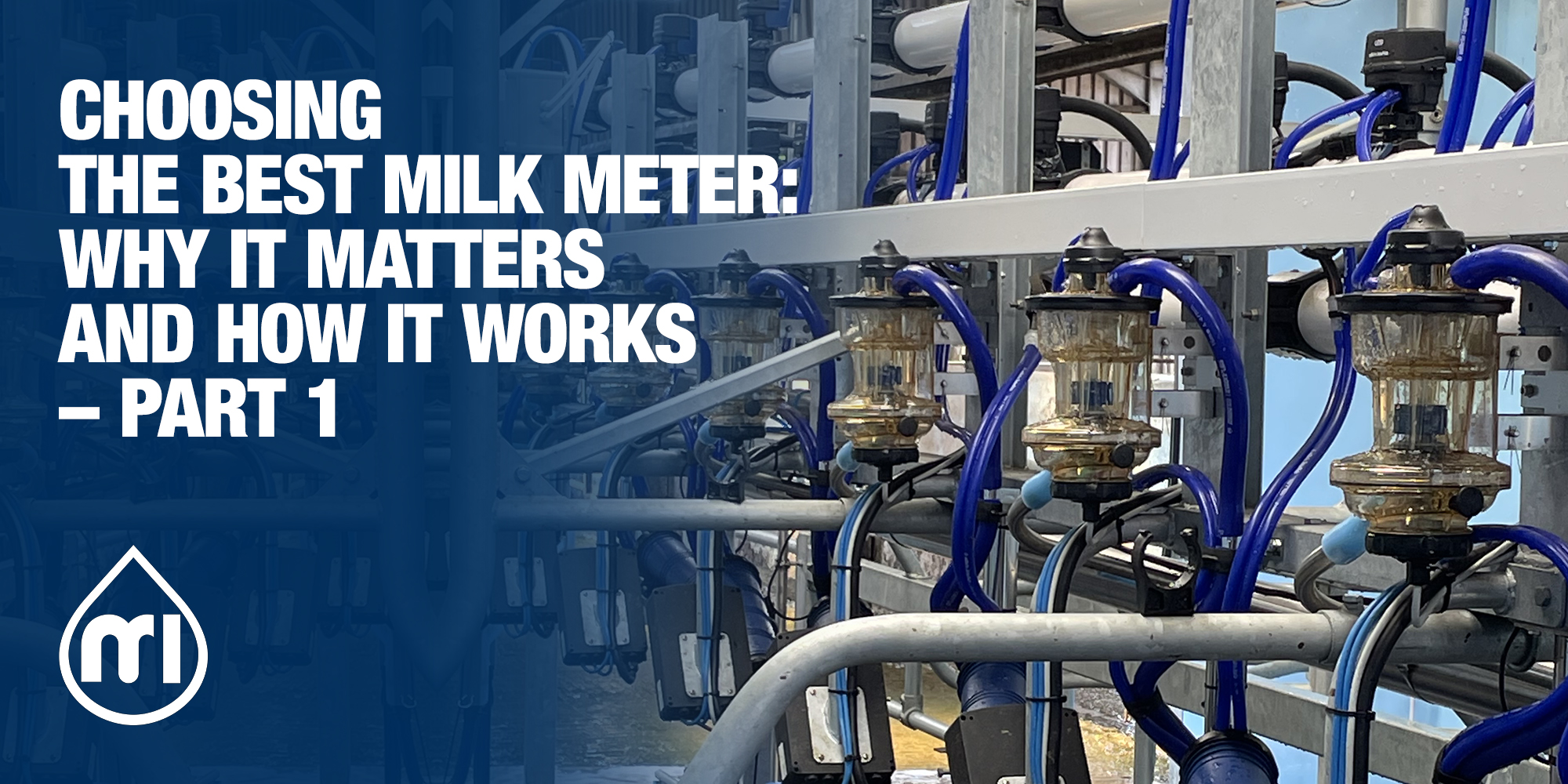
Choosing the best milk meter: why It matters and how it works – Part 1
Data on milking performance could represent a powerful source of help, to achieve milking efficiency. Therefore, throughout the following lines, we would like to demonstrate why milk meters are the right equipment to choose!
The milk meter is an essential part of the milking systems, as it allows the continuous measurement of both quantity and flow of the milk during the process, for each animal. From the combination of these two pillars, the level of productivity and efficiency of the herd stems. With the help of Simone Pezzi, our Global Product & Key Account Manager, let’s thus discover the added value of this equipment, as well as its functioning, and how to recognize the best milk meter for your herd!
The importance of milk quantity and flow
On the one hand, knowing the amount of milk produced by each cow facilitates the recognition of the high-yielding animals, as well as the adaptation of the feed intake to the milk released, optimizing the milk-feed ratio.
Moreover, when counting on the report of each milking, it is extremely easy to detect any change in the yield of a cow, compared to its average standards, identifying any issue related to health or heat in advance.
On the other hand, it is also primary to know how much it takes for a cow to release a certain amount of milk. The shorter the time, the more efficient the process.
Though, it is not only about this. In fact, most advanced milk meters measure instant milk production, providing an overview of the milking routine as complete as possible. The reasons why this feature is crucial are several:
It highlights inefficiencies in the overall process, due to inadequate milking parameters, which lead the system not to function properly. These cause excessive stress to the animal, as well as over-milking, both seriously threatening cow’s well-being and the efficiency of the process.
It allows the farmer to spot any inefficiency during the preparation stage of milking, when cows need to release oxytocin, leading to bimodalities.
This means that a drop in milk flow is registered, once the cisternal milk is ejected.
Figure 1 - Optimal and bimodal milk flow compared
Inadequate milking settings and insufficient preparation lag time hinder the activation of the milk ejection reflex between cow’s brain and udder, preventing alveolar milk from timely flowing into the gland cistern.
Bimodality can prolong milking time, as well as cause congestion and oedema, exposing the animal to mastitis.
Milk conductivity and temperature to evaluate cows’ well-being
When choosing the milk meter to install in your parlour, a further feature to take into account is its ability to measure milk conductivity and temperature.
The former aspect is an indicator of a high infection rate. More precisely, the more significant the quantity of salts in the liquid, the higher the conductivity. Therefore, when it suddenly and consistently differs from cow’s average value, it indicates an abnormality. Likewise, when milk temperature significantly overcomes the animal’s average body temperature, it may indicate a health issue.
What if you underestimate the power of milk meters?
After mentioning what to look for when selecting the right milk meter for your parlour, let’s investigate the consequences of not installing it.
If a milk meter allows you to detect any abnormality in advance and to treat any disease on time, without it the monitoring of animals’ health will be slower and inefficient. This implies that any issue might only be recognized at an advanced stage, with the risk of becoming a chronical disease, heavily affecting farm profitability.
A second aspect to consider, is the impossibility to detect the high-yielding animals. Underestimating them might lead to prioritize low-yielding ones, wasting the chance to optimize the efficiency and the profitability of the milking process.
Furthermore, without the performance monitoring, it is not possible to evaluate the right milk-feed ratio for each animal, with the risk of wasting feed, and consequently money, on cows that produce less, while not feeding enough high-yielding ones.
We hope this introduction on why measuring milk quantity and flow contributed to convincing you that installing milk meters is the right choice for your herd.
Are you eager to learn more about the functioning of this equipment, and how to recognize the most reliable one? Make sure not to miss our next blog episode!
MI thank Simone Pezzi for the support.
Sources:
It’s all in the flow Sipka, Wieland, Geary – Hoard’s Dairyman, 10/2021
